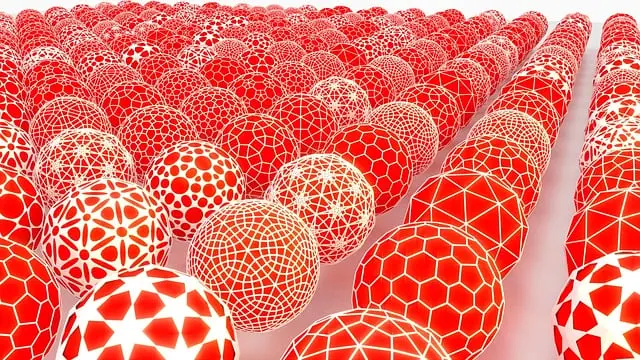Post-Traumatic Stress Disorder (PTSD) is characterized by intrusive memories, avoidance behaviors, negative mood changes, and hyper-arousal following exposure to traumatic events. Symptoms include flashbacks, distressing dreams, avoidance leading to lifestyle changes, feelings of guilt or loss of interest in previously enjoyed activities, and heightened alertness with symptoms like insomnia and irritability. Treatment for PTSD is multifaceted, often combining psychotherapy such as cognitive-behavioral therapy (CBT), exposure therapy, and eye movement desensitization and reprocessing (EMDR) with medication when necessary. Kratom, derived from the Mitragyna speciosa tree, has emerged as a potential complementary therapy for managing PTSD symptoms like muscle tension and stress due to its muscle relaxation properties and interaction with opioid receptors, offering analgesic and anxiolytic effects. However, it's crucial to consult healthcare providers before using Kratom, considering dosing, interactions, and legal considerations. Holistic treatments for PTSD also include techniques like progressive muscle relaxation, guided imagery, biofeedback, and complementary practices such as regular exercise and meditation, which contribute to the physical wellbeing and emotional healing necessary for recovery. These methods are part of a comprehensive strategy that addresses both the physical manifestations of PTSD, like chronic pain and muscle tension, through Kratom's potential benefits, and the psychological aspects through therapy and lifestyle modifications, ultimately aiming to improve the quality of life for individuals with PTSD.
Post-traumatic stress disorder (PTSD) profoundly impacts the lives of those who experience it, often requiring a multifaceted approach to recovery. This article sheds light on the nuanced aspects of PTSD, from its telltale signs and diagnostic processes to the promising roles of Kratom and muscle relaxation techniques in the healing journey. By exploring ‘Understanding Post-Traumatic Stress Disorder’ and delving into ‘Holistic Approaches to PTSD Recovery,’ we uncover how these methods can be integrated into one’s recovery plan. Furthermore, ‘Enhancing Physical Wellbeing and Emotional Healing: Strategies for Muscle Relaxation in PTSD Recovery’ provides insightful guidance on alleviating the physical manifestations of trauma, paving the way for a more comprehensive understanding of the path to recovery for those affected by PTSD.
- Understanding Post-Traumatic Stress Disorder (PTSD): A Comprehensive Overview of Symptoms and Diagnosis
- Holistic Approaches to PTSD Recovery: The Role of Kratom in Managing Symptoms
- Enhancing Physical Wellbeing and Emotional Healing: Strategies for Muscle Relaxation in PTSD Recovery
Understanding Post-Traumatic Stress Disorder (PTSD): A Comprehensive Overview of Symptoms and Diagnosis

Post-Traumatic Stress Disorder, commonly known as PTSD, is a complex psychiatric condition that can develop following exposure to extreme trauma such as combat, assault, accidents, or natural disasters. Individuals with PTSD may experience a range of symptoms, which can be categorized into four main types: intrusive thoughts, avoidance behaviors, negative changes in thinking and mood, and hyper-arousal and alertness. Intrusive symptoms often manifest as flashbacks, frightening thoughts, or dreams related to the traumatic event, which can be distressing and disrupt daily functioning. Avoidance might involve conscious efforts to steer clear of people, places, objects, or situations that remind the individual of the trauma. Negative changes may include a pessimistic outlook on life, feelings of guilt or shame, and a loss of interest in activities once enjoyed. Hyper-arousal can present as difficulty sleeping, irritability, difficulty concentrating, and an increased sense of alertness or danger.
In the realm of treatment for PTSD, various approaches are employed to alleviate symptoms and support recovery. Among these, natural supplements like Kratom have gained attention for their potential role in muscle relaxation and stress relief. Kratom, derived from the leaves of the Mitragyna speciosa tree, contains compounds that may influence the brain’s opioid receptors, leading to analgesic and anxiolytic effects. These properties can be beneficial for individuals with PTSD who experience significant muscle tension and chronic pain associated with their condition. It is important for those considering Kratom as part of their treatment regimen to consult healthcare professionals, as dosing, interactions with other medications, and the legality of Kratom vary by region. Additionally, a comprehensive recovery plan often includes psychotherapy, such as cognitive-behavioral therapy (CBT), exposure therapy, and eye movement desensitization and reprocessing (EMDR), alongside medication management to address the multifaceted nature of PTSD. Proper diagnosis by mental health professionals is crucial to tailor an effective treatment strategy that considers the individual’s unique experiences and symptoms.
Holistic Approaches to PTSD Recovery: The Role of Kratom in Managing Symptoms

Holistic approaches to PTSD recovery often incorporate a range of complementary therapies designed to address both the mental and physical manifestations of the condition. Among these, the use of Kratom has emerged as a potential aid in managing symptoms such as chronic pain and muscle tension, which are common among individuals with PTSD. Kratom, derived from the leaves of the Mitragyna speciosa tree, interacts with the body’s opioid receptors, offering analgesic effects that can contribute to muscle relaxation and a reduction in discomfort. This natural substance may help alleviate some of the physical stressors that exacerbate PTSD symptoms, allowing for a more conducive environment for healing.
Moreover, Kratom’s influence on mood regulation and its potential to improve sleep quality can further support the recovery process. By promoting relaxation and potentially mitigating insomnia, individuals with PTSD may experience improved overall well-being. It is important to approach the use of Kratom with caution, as it is a potent compound that requires careful consideration of dosage and individual tolerance. Clinicians and patients should collaborate closely to monitor its effects, ensuring that it is integrated safely within a comprehensive treatment plan that may include therapy, medication, and other holistic practices. This multifaceted strategy can pave the way for a more holistic recovery from PTSD, where the management of physical symptoms like muscle tension through Kratom can complement psychological interventions, leading to an improved quality of life for those affected by this condition.
Enhancing Physical Wellbeing and Emotional Healing: Strategies for Muscle Relaxation in PTSD Recovery

Engaging in strategies that enhance physical wellbeing is a cornerstone of post-traumatic stress disorder (PTSD) recovery, particularly when it comes to managing symptoms such as heightened tension and muscle pain. Muscle relaxation techniques play a pivotal role in this process, offering a non-invasive approach to alleviate the physical manifestations of PTSD. These techniques can be part of a comprehensive treatment plan that includes therapy, medication, and lifestyle adjustments. Kratom, a botanical supplement derived from the leaves of Mitragyna speciosa, has gained attention for its potential muscle-relaxing properties. While research is ongoing to fully understand its effects, some individuals report that kratom helps in reducing chronic pain and inducing relaxation, which can be beneficial for those with PTSD who experience muscle tightness or discomfort as part of their stress response. It’s important for anyone considering kratom to consult healthcare professionals, as it may interact with other medications and carry potential side effects.
Emotional healing is intricately linked to physical wellbeing; addressing one can significantly influence the other. Incorporating practices like progressive muscle relaxation, guided imagery, or biofeedback can help individuals with PTSD regain control over their physical responses to stress. These techniques not only aid in reducing muscle tension but also provide a sense of empowerment and self-regulation. Additionally, regular exercise, yoga, and meditation can complement these efforts by promoting overall health, improving mood, and enhancing resilience. When combined with professional support, these strategies can contribute to a holistic approach to PTSD recovery, fostering both physical relaxation and emotional healing.
In conclusion, post-traumatic stress disorder is a complex condition that profoundly impacts an individual’s life. Understanding its symptoms and proper diagnosis are pivotal steps in the recovery journey. Holistic approaches, including the use of Kratom as a potential aid in managing PTSD symptoms, offer promising avenues for healing. Moreover, incorporating strategies for muscle relaxation into one’s recovery plan plays a significant role in enhancing both physical wellbeing and emotional healing, contributing to a more comprehensive treatment approach for those affected by PTSD. It is through the integration of these methods that individuals may find renewed strength and hope on their path to recovery.






